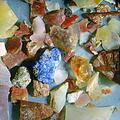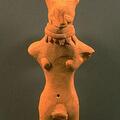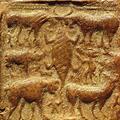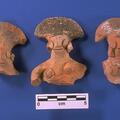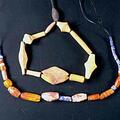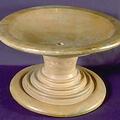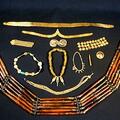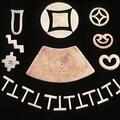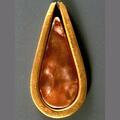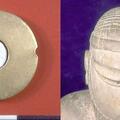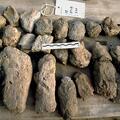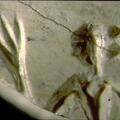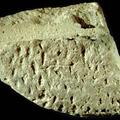Flakes of various shades of agate, carnelian, jasper, chert, and lapis lazuli indicate the range of raw materials being processed in this part of the Harappa during the pre-Indus Ravi phase (3300-2800 BCE). All of these raw materials were brought to the site
344 posts, also carried on our Facebook page, about the ancient Indus Valley civilization, including important news, research and occasional visits to museums with ancient Indus artifacts.
Oct 15, 2012
An unusual male figurine found at Harappa with a fan shaped headdress and choker around the neck may be a representation of alternative gender in the ancient Indus civilization. These are usually characteristic of female figurines.
For more on Masculinity, see
Oct 7, 2012
Sealing from Mohenjo-daro depicting a collection of animals and some script symbols. This terra cotta sealing may have been used in specific rituals as a narrative token that tells the story of an important myth.
See also Rare Three Animal Seal from
Oct 3, 2012
Three female figurines with painted fan-shaped headdresses from Harappa. Could these headdresses have represented black hair stretched over a frame of bamboo or other material?
See also Gender and the Indus People: An Unusual Male Figurine and Harappan Female
Sep 23, 2012
Beautiful strand of Pre-Indus Ravi Phase (3300-2800 BCE) beads of terra cotta, carnelian, amazonite and lapus lazuli found at Harappa.
For more, read Mark Kenoyer's Bead Technologies at Harappa, 3300-1900 BC: A Comparative Study.
Jun 24, 2012
This Late Harappan piece has a hole in the center that may have been used for a ritual purpose. This piece resembles the Pedestal Vessel.
For more on death and burial, see Painted Burial Pottery.
Jun 2, 2012
A variety of golden artifacts have been discovered. Here, we see a gold bead collection discovered at Harappa 2000-2001. Other artifacts include a Composite Tubular Gold Bead, a pair of Gold Foiled Beads, and Bell Shaped Gold Ornaments.
For more
May 20, 2012
Assorted shell inlay with intersecting-circle and womb motifs from Mohenjo-daro.
For more, read Mark Kenoyer's article Shell Working Industries of the Indus Civilization: A Summary as well as his article Shell-working in the Indus Civilization.
Apr 5, 2012
Carnelian and gold pendant or hair ornament found at Harappa. What else might it have been 4000 years ago?
Feb 12, 2012
For those who once thought the so-called "Priest King" bust was not native to the ancient Indus Valley, here is a male head from Mohenjo-daro with similar features.
Jan 3, 2012
"The central ornament worn on the forehead of the famous 'priest-king' sculpture from Mohenjo-daro appears to represent an eye bead, possibly made of gold with steatite inlay in the center." J.M. Kenoyer
Dec 11, 2011
The pre-Indus civilization or so-called Ravi phase around 3000 BCE at Harappa yielded hand-formed mudbricks. Here, we can see the bricks very obviously lack uniformity in size and shape. There is a remarkable difference between these bricks and those from
Oct 30, 2011
Complete fragment of seal with the trident hand, from Richard Meadow: H98-3505/8347-105
Steatite seal, intaglio. White fired steatite with a white core. Red speckling on interior below glaze level, slightly speckled on surface.
Oct 2, 2011
The earliest evidence of textiles at Harappa goes back to about 3300 BCE, and is another suggestion of how important this product must have been to the later Indus economy.
Additional information concerning Indus textiles can be found in New Evidence for

